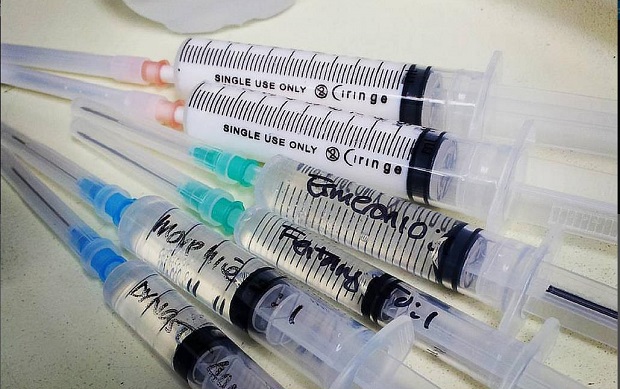Ontario’s provincial government needs to act fast in building a coordinated information network and collaboration system to monitor the cases of fentanyl overdose in the province before it becomes a full-blown crisis, according to one of the organizations which raised an alarm about the issue.
“Deaths attributed to the overdose of bootleg fentanyl is growing at a rapid rate in North Eastern states of the U.S… we’ve seen this crisis in Alberta last fall and there are signs it headed this way,” Michael Parkinson, spokesperson of the Waterloo Region Crime Prevention Council, told CGE yesterday.
“The Canary in the coal mine is singing,” Parkinson said, but he doubts if Ontario officials are listening.
On Monday, the WRCPC, along with the Ontario Association of Chief of Police, Municipal Drug Strategy Coordinators Network of Ontario, and the Ontario Overdose Prevention and Naloxone Access Working Group issued an advisory warning that fentanyl-related deaths sweeping across Western provinces and some nearby American states have reached Ontario.
RELATED CONTENT
Organizations warn of potential bootleg fentanyl crisis in Ontario
More than 6,000 people have died of an opioid-related overdose since 2000. Estimates indicate that In 2014, a person died of an opioid-related overdose every 13 hours, according to the advisory released by the groups – that number exceeds the total number of deaths on Ontario’s roadways for the same period.
British Columbia has declared a public health overdose emergency as record-setting overdose deaths due primarily to bootleg fentanyl have surged 74 per cent over the same period last year.
Between 2011 and 2015, bootleg fentanyl had driven overdose fatalities up 4,500 per cent in Alberta, according to Joe Couto of the Ontario Association of Chiefs of Police.
“I have a feeling we’re sitting on a ticking time bomb,” said Parkinson. “Unfortunately, action is lacking on the part of the province…Ontario doesn’t even have a Web site dedicated to the issue of fentanyl addiction and its dangers.”
He said WRCPC sent Ontario Premier Kathleen Wynne a letter in April this year calling on her “for leadership and collaboration” in getting the setting up a system that would deal with the fentanyl problem. However, the group has not yet heard back from the premier.
While the fentanyl-related deaths have not yet reached epidemic proportions in Ontario, Parkinson believes a system similar to the one the province developed during the SARS (severe acute respiratory syndrome) outbreak in the early 2000s might be a good model for how officials, as well as frontline health care and community workers, can deal with the problem.
At that time, a province-wide, country-wide and international data sharing arrangement to track the spread of the disease was developed. Methods for dealing with SARS and patients were shared to come up with best practices and multiple channels were used to inform the public as well.
Parkinson said he realizes that addiction is a different issue but points out that first responders and health care workers dealing with fentanyl overdose cases would benefit from a system that monitors overdose cases and allows various stakeholders to coordinate their efforts.
Such a collaborative system, he said, should be based on established drug strategies that focus on prevention, harm reduction, and treatment.

